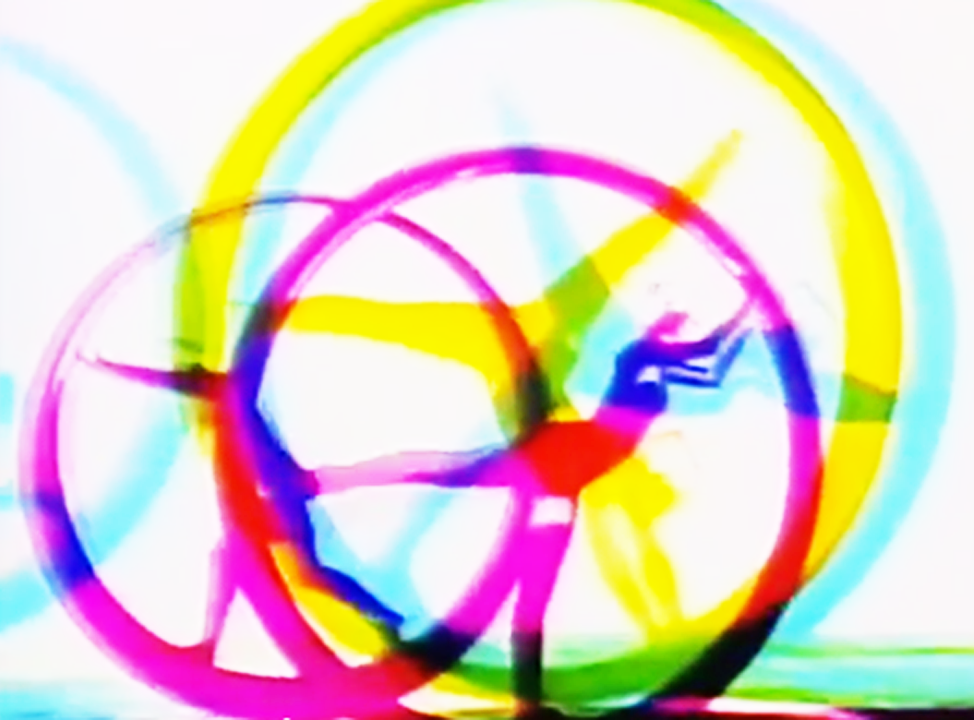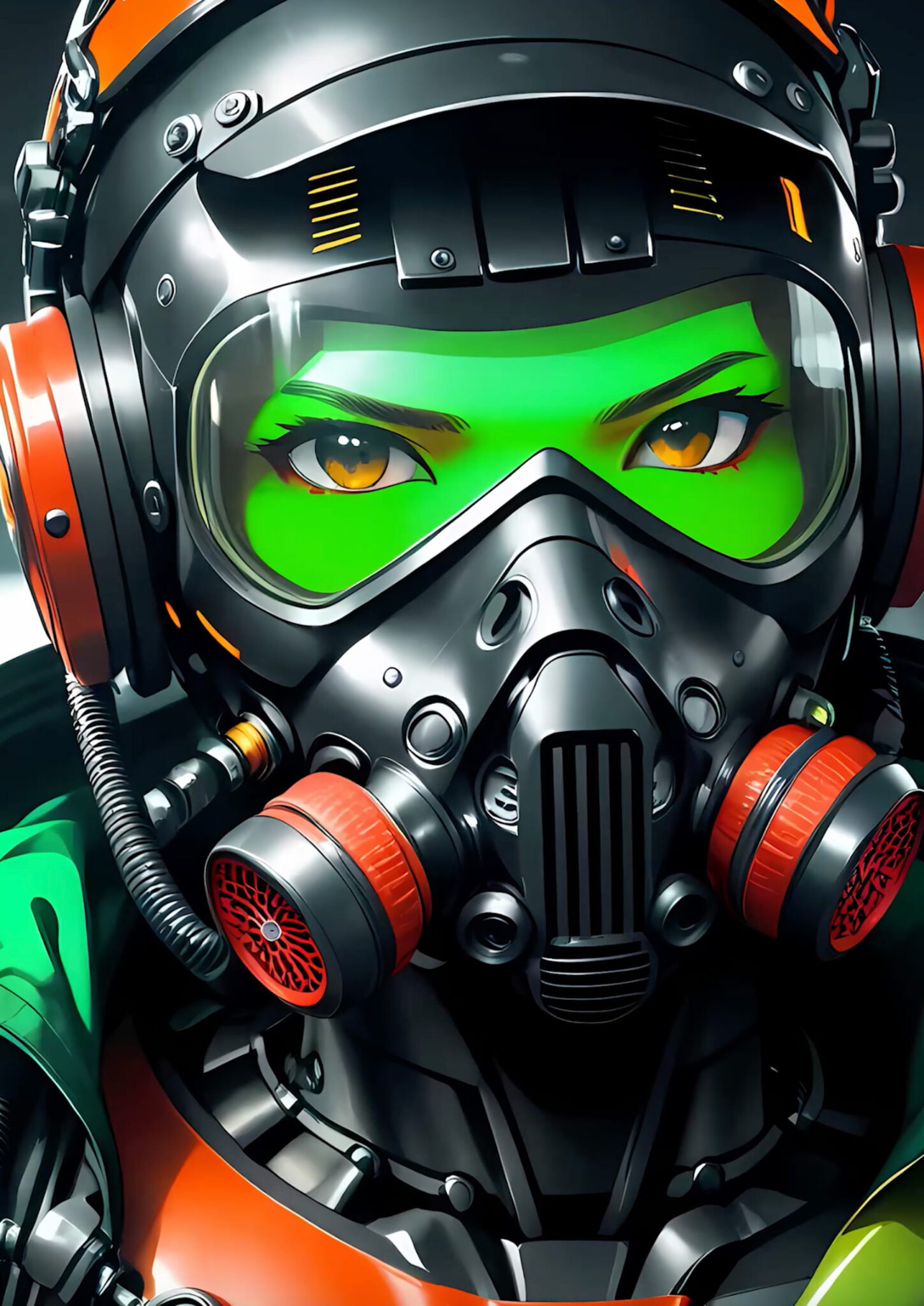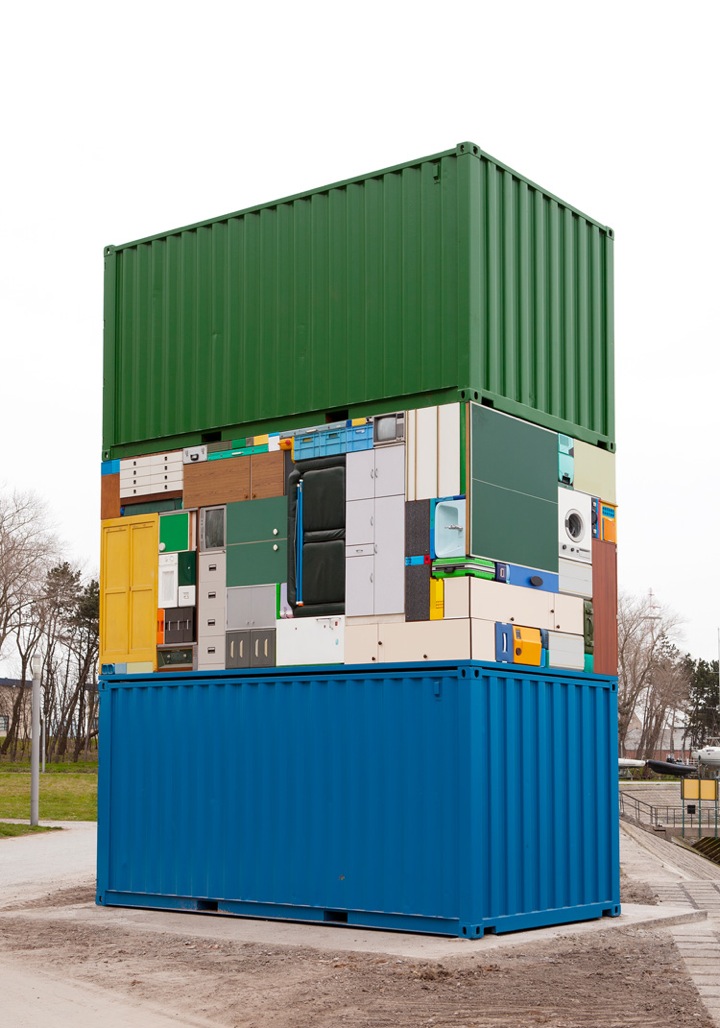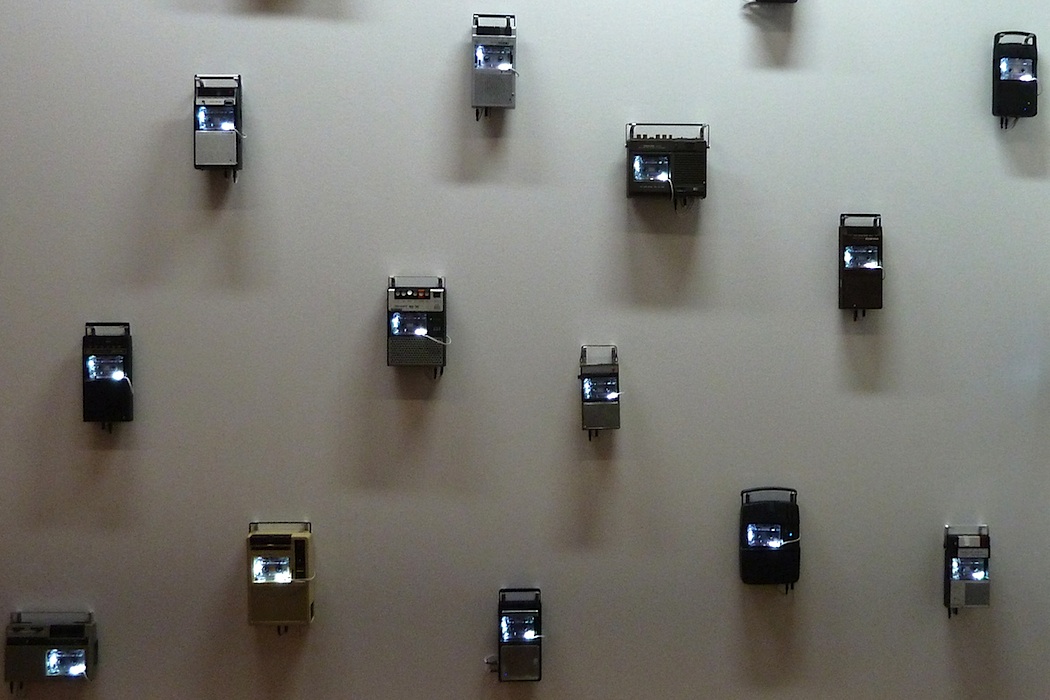


doris chase
Circles II
Doris Chase has achieved international stature as a pioneer in the field of video art since she moved from Seattle to New York City in 1972. An artist of remarkable and continuous creativity, Chase now divides her time between her video headquarters in New York and a Seattle studio where she works on new projects in painting and sculpture.Beginning as an innovative painter and sculptor in Seattle in the 1950s, Chase created sculpture that was meant to be touched and manipulated by the viewer. Chase then developed large-scale kinetic sculptures in collaboration with choreographers, and her art was set in motion by dancers. In New York, her majors contribution to the evolution of artists’ video has been her work in videodance. On videotape, dancers and sculpture evolve into luminous abstract forms which represent some of the most sophisticated employments of video technology by an artist of the 1970s. In the 1980s, Chase began working in the nascent genre of video theater. In these productions, she uses the imtimacy of the video screen to achieve a new synthesis of visual and dramatic art. Her video theatre compositions present multicultural and social commentary, utilizing scripts by writers such as Lee Breuer, Thulani Davis, and Jessica Hagedorn in the “Concepts” series. Collaborating with actresses Geralding Page, Ann Jackson, Roberta Wallach, Joan Plowright, and Luise Riner in the “By Herself” series, she focuses on the viewpoints and experiences of older women. Today, coming full circle, Doris Chase in Seattle is exploring a renewed interest in painting and sculpture as well as in the modernist aesthetic she never really ceased pursuing, even during her most adventuresome multimedia years.



QUBIT AI: Iskarioto Dystopian AI Films
Subway Chase
FILE 2024 | Interator – Sound Synthetics
International Electronic Language Festival
Iskarioto Dystopian AI Films – Subway Chase – Spain
Subway Chase is a high-speed underground race, a visual glitch that dissolves and transforms with the musical waves.
Bio
Iskarioto Dystopian AI Films is an emerging Spanish artist, empowered with cutting-edge AI tools, a fusion of human creativity with machine potential. He is known as a visual alchemist, pixel manipulator, and graphic, dark, dystopian storyteller. Since its premiere in 2022, it has been shown in art galleries around the world, having won the Artistic Award at the AI Film Festival Montpellier 2023.
Credits
Music: Subway Chase by Karl Casey

Francis Alÿs
Tornado
“Over the last decade Alÿs made recurrent trips to the highlands south of Mexico City to chase, video camera in hand, the dusty whirls whipped up by the wind in the burnt fields at the end of the dry season. Rumor has it that the genesis of this project was, in fact, a comic quid pro quo: Alÿs overheard a conversation where friends were talking about Don Quixote fighting windmills (in Spanish, molinos de viento), but he understood instead tornadoes (remolinos de viento). As in Cervantes work, Alÿs’s intent to penetrate the peaceful zone in the epicenter of the tornado illustrates a condition where ‘the vanity of the action is paired with the absolute necessity.” Félix Blume

ANDREW HIERONYMI
move
File Festival
MOVE is an interactive installation divided into six distinct modules, JUMP, AVOID, CHASE, THROW, HIDE and COLLECT. Each module offers a single-user interaction, based on a verb corresponding to the action the participant is invited to perform. Each verb corresponds to a common procedure acted out by avatars during videogame play. Each module offers an interaction with abstracted shapes (circles, rectangles) behaving according to simplified rules of physics (collision, friction). Each module is color-coded with consistency, where the color red is used for the graphical element that poses the core challenge. Each module increases difficulty in a similar linear manner.What makes MOVE unusual is that unlike most computer vision or sensor based games like Eye-toy or Dance Dance Revolution, the participant IS the avatar, he is not seeing a representation of herself or an indirect result of her actions on a separate screen but instead interacts directly with the projected graphical constituents of the game. Because those graphical elements are non-representational they do not allow for a projection in a fictional space. The combination of abstracted shapes and direct interaction reinforces in the player the focus on the action itself (JUMP, AVOID, CHASE, THROW, HIDE or COLLECT) instead of an ulterior goal.

LAURENT SEROUSSI
לורן סרוסי
insectes
Seroussi personifies the insects that crawl or fly around us by merging strong bodies, human faces, and the fine details of these segmented creatures. As the feminine faces glance over their shoulders or close their eyes with sleek and sensual expressions, Seroussi romanticizes the small creatures that we otherwise chase out of our lives and our homes.

kevin abosch
Yellow lambo
The piece, “YELLOW LAMBO” (2018)[…] is a reference to a half-serious joke in the crypto community about using profits to buy Lamborghinis.“I became familiar with #lambo as a declaration of success-identity, and because I always think in terms of how to distill emotions around value, I wanted to explore that,” Mr. Abosch said. He created another token, called YLAMBO, and turned its address into a physical sculpture in yellow neon. This sculpture then sold for $400,000 at a San Francisco art fair to Michael Jackson, the former chief operating officer of Skype. The meta-weirdness around the purchase of the art is at the heart of the questions Mr. Abosch wants to explore.

Neil Mendoza
The Electric Knife Orchestra
Created by Neil Mendoza, The Electric Knife Orchestra consists of sixteen knives and one meat cleaver (all purchased from the $0.99 store) that have been brought to life to perform the Bee Gees’ 1977 hit Stayin’ Alive. The orchestra consists of six musical machines and all of the sound is created through the operation of these machines.

MICHAEL JOHANSSON
マイケル·ヨハンソン
Майкл Йоханссон
The Move Overseas
Created by contemporary Swedish artist Michael Johansson, these “real life Tetris” installations see other people’s unwanted objects methodically and painstakingly packed together into neat, colour co-ordinated blocks. Inspired by real life coincidences, such as two people passing each other dressed in the same outfits, Johansson has been constructing the sculptures since 2007, installing them in public areas like tight alleyways and strangely shaped doorways as well as showing them at group and solo exhibitions all over the world. Speaking to PINCH magazine, Johansson said:
“These irregularities, or coincidences, are a great source of inspiration for me. I have also as long as I can remember been fascinated by flea markets. And in specific a fascination by walking around to find doubles of seemingly unique, though often useless objects I have already purchased at another flea market. There is something irresistible in the knowledge that if you don’t buy that particular object right away, the opportunity might never come back. I think the same rules compelling me to select things at flea markets are also central to my art practice, that you need to combine something very familiar with something very unique to create an interesting art experience.”
.

Stephen Cornford
Binatone Galaxy
An installation for used cassette players which looks on their obsolescence not as an ending, but as an opportunity to reconsider their functional potential. Superseded as playback devices, they become instruments in their own right. Replacing the prerecorded content of each tape with a microphone gives us the chance to listen instead to the rhythmic and resonant properties of these once ubiquitous plastic shells. Binatone Galaxy brings the framework within which a generation purchased their favourite records to the centre of attention, revealing the acoustics of the cassette and the voices of the machines themselves.“On the walls of a white room, brightly illuminated with natural light, Stephen Cornford, and artist who describes his work as existing “at the intersection of sculpture and music”, has mounted some 30 old cassette recorders. Models from Boots, Sanyo, Robotic, one lone and gorgeously named Binatone Galaxy: they all hang on the walls, wired up, tapes loaded and ready for action. Smitten by an attack of technological melancholia, the visitor can wonder who owned these things, what pop charts did these machines once record? Were they ever placed next to pillows, late at night for surreptitious listening pleasures? What happened to the voices that once rubbed the magnetic heads of these little machines? For some artists, the speed (and resulting impact) of obsolescence on the technology we once took for granted has spawned a form of fetishism, in which the voices – the human agency – they once recorded exist in an alternate, ghostly dimension, a reminder of what once was. This is not Cornford’s theme. The fact that each audio cassette in his machines is fitted with a motion sensor and a contact mic, so that, on entry the machines whirr into action, indicates that Binatone Galaxy is very much of the here and now. Yes, Cornford has chosen old, cheap and accessible technology with which to realise this, but I suspect that he is aiming for a furrruuuzzy audio intimacy.

LEON THEREMIN
ליאון טרמין
레온 테레민
Лев Термен
théremin
he invented an electronic device known as the theremin, which was a unique musical instrument that could be played without physical contact. Rather than plucking strings or pressing keys, the musician need only move their hands around antennas located on the device.The device became a popular curiosity and he proceeded to tour Europe in order to demonstrate it. In 1928, he moved to New York City in the United States, where he played a theremin in the New York Philharmonic Orchestra in 1928. In 1929, he was granted a patent for the device by the United States. He decided to give RCA the rights to manufacture and sell the theremin for a lump sum payment and a percentage of the sales.In the early 1930s, Theremin purchased a laboratory in New York that he used for experimenting with electronic musical instruments. One of the products of his lab was the Rhythmicon, which was purchased by Henry Cowell, a composer. In 1930, a group of ten “thereminists” performed at Carnegie Hall.Theremin also began researching a method to cause lights and sound to respond to the movement of dancers. His system became popular with ballet and dance clubs throughout the country.

TAKAHIRO MATSUO
تاكاهيرو ماتسو
松尾高弘
타카히로 마츠오
Такахиро Мацуо
Phantasm
file festival
To explore a fantasy world experienced sometime and somewhere in our memory. Phantasm is an interactive installation in which participants light up in a small dreamlike world in space. As you take hold of a glowing sphere that releases a pale light, the area lights up in pale blue light, and white butterflies appear from nowhere as a soft piano melody flows. Butterflies fly slowly and gloriously, gathering toward the sphere, and chase you as you move the sphere. The sphere is the key to the real world and fantasy. Participants can experience the nostalgia of playing with butterflies by moving around or holding the sphere in the air. Beautiful white butterflies draw wing strokes in the air as if they are symbols of a fantasy world; they delicately lead you into their world. If you cover the sphere with your hands to shut out the light, the butterflies gradually disappear, leaving silence and lingering light, bringing you back to reality. You will find yourself perplexed as if it were a fleeting dream. Technical statement of “Phantasm” LEDs are used as the light source for the sphere which is the interface, so that the sphere glows in uniformity and allows the interaction of participants hiding the light or releasing the light with their hands. Light, color tone, and the position of the sphere are monitored with a sensor camera placed on the ceiling, and by connecting with real time CG, the butterfly movements (appearance, disappearance, gathering, and chasing) become possible.